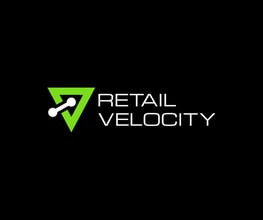
Retail Data Harmonization: Why CPG Sales & Marketing Teams Need It
Table of Contents
In today's fast-paced business environment, consumer packaged goods (CPG) sales and marketing teams are inundated with vast amounts of data from various internal and external sources.
From consumer interactions and market trends to point of sale (POS) data and syndicated data, the abundance of data holds immense potential for driving business growth and enhancing shopper experiences. However, harnessing this potential requires a strategic approach to data management. Two crucial processes in this regard that salespeople and marketers should understand are data harmonization and data normalization.
For sales and marketing personnel, ensuring the accuracy and reliability of data that arrives in different formats from diverse data sources, with varying levels of granularity, is a constant challenge and can be complex. When data is inaccurate, incomplete, or disparate, then reporting and analytics are skewed and unreliable, leading to fallacious insights and poor business decisions that can be costly for manufacturers, suppliers, and retailers.
Therefore, data harmonization and data normalization are paramount to gaining precise, actionable insights that can be leveraged for strategic decision-making related to pricing, sales forecasting, product assortment planning, trade promotions, marketing campaigns, and more.
Although they are often used together to improve the quality and consistency of data and are often thought of as the same procedure, data harmonization and data normalization are two distinct processes in the realm of data management and analysis. Sales and marketing teams don’t need to know HOW to normalize or harmonize data—their time will be better spent actually analyzing the data and deriving valuable insights from it. But they should understand, at least at a basic level, the difference between the two processes and, more importantly, WHY they need both to obtain the critical insights necessary to be successful in their respective areas.
If you’re in CPG sales, marketing, category management, or you’re a brand manager, here’s what you should know about retail data harmonization and normalization.
Understanding Data Normalization
As mentioned above, in the CPG industry, data is typically collected from diverse sources such as retailers, distributors, POS systems, market research firms, and internal databases. More often than not, the data received is not ready for proper analysis.
Data normalization is akin to organizing your wardrobe. Just as you arrange your clothes by type, size, and color to easily find what you need, data normalization involves structuring your data in a logical and efficient manner. At its core, normalization aims to eliminate or at least minimize redundancy and dependency within typically a single database or data repository, ensuring data integrity, consistency, and that each piece of data is stored in only one place.
When raw retail data is transformed into a common format that ensures comparability across different datasets, systems, and sources, it can then be easily analyzed, integrated, and utilized for various purposes such as reporting, analytics, and decision-making.
Data Normalization Goal and Key Objectives
The goal of data normalization is to eliminate data anomalies and improve data integrity within a single database. The primary objectives of retail data normalization include:
Standardization: Ensuring that data adheres to a uniform structure, format, and naming conventions across all sources and systems. This facilitates seamless integration and eliminates discrepancies that may arise due to inconsistencies in data representation. An example would be ensuring that product names are standardized across all datasets, using a common naming convention.
Cleansing: Identifying and rectifying errors, inconsistencies, or missing values within the data to enhance its accuracy and reliability. This could include removing duplicate entries, correcting typos, or filling in missing information.
Aggregation: Combining data from multiple sources or datasets into a unified format to enable comprehensive analysis and reporting. Aggregation may involve summarizing or consolidating data at different levels of granularity, such as by store, product, or time frame.
Normalization: Adjusting data to account for variations in units of measurement, currency, or other factors that may affect comparability. For example, converting all currency values to a single currency, converting sales volumes to a consistent unit of measurement, or adjusting for differences in sales volume based on store size or geographic location.
Enrichment: Enhancing raw data with additional information or attributes to provide more context and insights. This may involve appending demographic data, geographic coordinates, or other relevant variables to enrich the dataset and support more sophisticated analyses. This could also include market trends or external factors that may impact sales.
Validation: Validation involves verifying that the normalized data is accurate, complete, and consistent. This may involve comparing the normalized data against known benchmarks or conducting quality checks to ensure data integrity.
Data Normalization Benefits for Sales and Marketing Teams
For sales and marketing professionals, data normalization holds significant benefits:
- Improved Data Integrity: By eliminating data anomalies such as duplicates or inconsistencies, normalized data ensures accuracy and reliability. This translates to more dependable insights for strategic, data-driven decision-making that propel sales, revenue, and profitability for both the CPG and their retailer partners.
- Enhanced Analysis: Normalized data is structured for efficient querying and analysis. Sales and marketing teams can easily segment customers, track purchase patterns, and identify trends, empowering targeted marketing campaigns and personalized shopper experiences.
- Streamlined Operations: With normalized data, routine tasks such as data entry and updates become more straightforward. Sales reps can focus on engaging with customers rather than struggling with collecting data and wrestling with data inconsistencies.
Understanding Data Harmonization
While data normalization focuses on optimizing data within individual databases, data harmonization extends this concept to integrate and standardize data across multiple sources or systems. Think of data harmonization as orchestrating a symphony—bringing together diverse instruments (data sources) to create a harmonious melody (unified dataset).
Data harmonization is the process of bringing together data from different sources or systems and reconciling any differences in data formats, definitions, structures, or semantics. It aims to create consistency and compatibility among disparate datasets and ensure a coherent data framework where the data can work together seamlessly for analysis, reporting, and decision-making purposes across the enterprise.
Data Harmonization Goal and Key Components
The primary goal of data harmonization is to integrate diverse datasets into a unified and consistent format, making it easier to analyze and derive meaningful insights from the combined data. This is particularly important in scenarios where data is collected from multiple sources or systems with varying standards.
Key components of retail data harmonization include:
Standardization of Data Formats: Data in the CPG industry may come from different sources such as retailers, distributors, market research firms, and internal databases. Each source may use its own data format, terminology, or structure. Harmonization involves standardizing these formats to a common schema, ensuring that data can be easily integrated and analyzed together.
Alignment of Data Attributes: CPG data often includes a wide range of attributes such as product names, descriptions, SKUs, pricing, sales volumes, and more. Harmonization involves aligning these attributes across different datasets, ensuring consistency in naming conventions, units of measurement, and other relevant parameters.
Normalization of Data Values: Similar to data normalization, harmonization involves adjusting data values to a common scale or format. This may include converting currencies, units of measurement, or other variables to ensure uniformity across the dataset.
Integration of Data Sources: CPG data is typically collected from multiple sources, including retail POS systems, online sales platforms, customer relationship management (CRM) platforms, inventory management systems, market research surveys, and internal databases. Harmonization involves integrating data from these diverse sources into a single, cohesive data ecosystem. This may require linking data based on common identifiers such as product codes, customer IDs, or geographic locations.
Resolution of Data Conflicts: Sometimes, different sources may provide conflicting information or data discrepancies. Harmonization involves identifying and resolving these conflicts to ensure data accuracy and consistency. This may require manual intervention or the implementation of data validation rules to flag inconsistencies.
Enrichment with Additional Data: Harmonization may also involve enriching the dataset with additional information from external sources, such as demographic data, market trends, or competitor insights. This enriched dataset provides a more comprehensive view of the market landscape and helps in generating actionable insights.
Governance and Compliance: Establishing policies, standards, and protocols for managing and governing data across the organization. This includes ensuring compliance with regulatory requirements, data privacy laws, and industry standards to protect sensitive information and mitigate risks.
Data Harmonization Benefits for Sales and Marketing Teams
For CPG salespeople and marketers, data harmonization and the unified data it provides offers several advantages:
- 360-Degree View of Consumers: By consolidating data from various touchpoints—POS systems, CRM systems, social media platforms, website analytics—data harmonization enables a comprehensive understanding of consumer behavior and preferences.
- Holistic Marketing Strategies: Integrated data allows marketers to create cohesive, omnichannel marketing campaigns. Whether through email, social media, or offline channels, messages resonate consistently across the customer journey and all touchpoints.
- Accurate Sales Forecasts: Harmonized data provides a unified view of sales performance across regions, products, and channels. This facilitates more accurate forecasting and resource allocation, optimizing sales strategies, and maximizing revenue potential.
living in harmony
In the era of data-driven decision-making, CPG sales and marketing professionals are presented with a wealth of opportunities to gain insights and drive profitable business growth. However, realizing the full potential of retail data requires meticulous attention to and reliance upon essential data management practices such as normalization and harmonization.
Overall, data normalization plays a crucial role for sales and marketing teams in improving the quality, reliability, and usability of their data. Ensuring data integrity enables more accurate analysis, unlocks actionable insights, and enhances decision-making. Normalized data within individual databases also facilitates easier integration with other systems and datasets, making it easier to derive even deeper insights, identify trends, gain a better understanding of consumer behavior, and optimize business performance.
Meanwhile, data harmonization enables the integration and standardization of data across disparate sources, ensuring the data can be effectively analyzed and utilized to derive more valuable insights and drive strategic business decisions. With harmonized data, sales and marketing can gain a unified view of customers, consumers, and markets; optimize marketing strategies and new product launches; facilitate more accurate sales forecasts; and be more agile and responsive to market changes and triggers.
At its simplest, data harmonization and normalization increase the quality, value, and utility of business data. Both processes also make it possible for brands to confidently transform fragmented and inaccurate data into workable information—creating new analyses, actionable insights, and data visualizationsؙ—without IT involvement. Doing so helps sales and marketing users reduce the time taken to create and access business intelligence, discover critical insights, and detect early disruptions. If you’re spending less time scrambling to find the right source of data, then you can spend your time more effectively elsewhere, such as in planning, executing, and measuring business strategies that can make a significant revenue and ROI impact.
Without harmonized data from across your organization through a modern retail data platform such as VELOCITY®, you won't have a complete, true view of business performance. If your e-commerce performance data is in one place, retailer performance data is in another, and inventory and shipment performance data is in yet another, you’re highly likely missing an important part of the story behind your company’s performance.
By embracing data harmonization and normalization practices, sales and marketing personnel (as well as other stakeholders) can harness the power of data—a single source of harmonious truth—to stay ahead of the competition, deliver exceptional shopper experiences, position themselves to withstand disruptions, and achieve sustainable business success in today's dynamic retail marketplace.
Sometimes the path to harmony is through chaos. But we don't want you to go through that. Let Retail Velocity bring order and clarity to your data and insights so you can be at peace with your strategic decision-making and find balance in your sales, revenue, and profitability. Contact us today.



